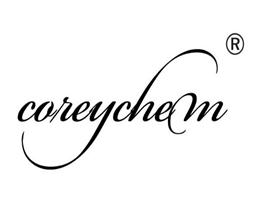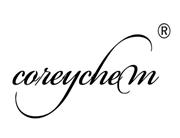| Production method |
It is obtained through the esterification between the acetate with the isoamyl alcohol separated from the fusel oil under the catalysis of sulfuric acid.
It is derived from the esterification between acetic acid and isoamyl alcohol. In the mixture of acetic acid and amyl alcohol, add sulfuric acid for esterification reaction, followed by neutralization with sodium carbonate (or caustic soda) with further calcium chloride dehydration to obtain the crude ester, and then refined by distillation to derive the finished products.
Isoamyl acetate is presented in bananas and cocoa beans and is commercially manufactured using pentanol separated from fusel oil as raw materials. Isoamyl alcohol and sulfuric acid have been added to glacial acetic acid for heating reflux reaction. When the temperature of the top of the column reached 132 °C, the esterification was complete. After cooling, wash with water, and neutralize with 10% NaOH solution and then washed with water to neutral, and finally dried with anhydrous calcium chloride after distillation, collecting 138~143 ° C fractions, being the product.
CH3COOH (CH3) 2CHCH2CH2OH [H2SO4] → CH3COOCH2CH2CH (CH3) 2 + H2O |
| Uses |
1. It is widely used to configure a variety of fruit flavors, such as Sydney, banana and some other types. There is also some appropriate application in the smoke and daily make-up essence is also appropriate application.
2. It can be used in the fragrance of heavy flowers such as chypre, sweet-scented osmanthus, hyacinth and heavy oriental flavor, being able to give the fragrance of fresh flower and adjust the fragrance odor with the dosage being often less than 1%. It is also applicable to the smiling flower type. It is also the major spices for the deployment of edible raw pear and banana flavor. It is also used in apple, pineapple, cocoa, cherry, grape, raspberry, strawberry, peach, caramel, cola, cream, coconut and vanilla bean. Also commonly used in wine and tobacco flavor.
3. Isoamyl acetate is a kind of edible fragrance allowed in China. It can be used to prepare fruit flavors such as strawberry, pineapple, bayberry, pear, apple, grape and banana. The dosage is 2700mg/kg in normal chewing gum. 190 mg/kg in confectionery; 120 mg/kg in pastry; 56 mg/kg in ice cream; 28 mg/kg in soft drinks.
4. Isoamyl acetate is an important solvent, being able to dissolve nitrocellulose, ester gum, vinyl resin, coumarone resin, rosin, frankincense, dama resin, mountain resin and castor oil. In Japan, 80% of the goods are used as spices, having a strong fruit flavor, like pears, bananas, apples and other fragrance. It is widely used in a variety of edible fruit flavor. In the smoke spice and daily cosmetic spice, there is also appropriate application. It is also used in rayon, dyes, artificial pearls, penicillin extraction and so on.
5. GB 2760~96 provides it as allowable food flavors. It can also be taken as a solvent, being the major raw material for the preparation of pear and banana flavor. It is commonly used in alcohol and tobacco flavor, also used in the preparation of apples, pineapple, cocoa, cherries, grapes, strawberries, peaches, butter, coconut and other fragrance preparation.
6. It can be used as chromatographic standard substance, extraction agent and solvent
7. It can be taken as solvent, for chromium determination, photography, printing and dyeing and the extraction agent of iron, cobalt and nickel. |
| Chemical properties |
It appears as colorless transparent liquid with pleasant banana aroma, being volatile. It is miscible with ethanol, ethyl ether, benzene, carbon disulfide and other organic solvents, being almost insoluble in water. |
| Content analysis |
This was determined by the method I in the ester assay (OT-18). The amount of sample taken was 800 mg. The equivalent factor (e) in the calculation is 65.10.
Alternatively, apply the non-polar column in the gas chromatography (GT-10-4) for measurement; |
| Toxicity |
ADI 0 to 3.7 (FAO/WHO, 1994);
LD5016.6 g/kg (rat, oral); |
| Usage limit |
FEMA (mg/kg): soft drinks 28; cold drinks 56; candy 190; baked goods 120; pudding 100; take appropriate amount as limit (FDA § 172.515, 2000); |
| Hazards & Safety Information |
Category: Flammable liquids
Toxicity classification: Low toxicity
Acute Toxicity: Oral-Rat LD50: 16600 mg/kg
EXPLOSIVES HAZARDOUS CHARACTERISTICS: it is explosive if its vapors are blended with air
Flammability and Hazardous characteristics: it is easily flammable with burning releasing irritant smoke
Storage and transportation characteristics: Treasury: ventilated, low temperature and dry; store and transport it separately from oxidant.
Extinguishing agent: dry powder, carbon dioxide, foam, mist water
Occupational Standard: TWA 525 mg/m3; STEL 650 mg/m3 |
| Chemical Properties |
CLEAR COLOURLESS LIQUID |
| Uses |
Sting pheromone of the honeybee.1 |
| Definition |
ChEBI: The acetate ester of isoamylol. |
| Uses |
In alcohol solution as a pear flavor in mineral waters and syrups; as solvent for old oil colors, for tannins, nitrocellulose, lacquers, celluloid, and camphor; swelling bath sponges; covering unpleasant odors, perfuming shoe polish; manufacture of artificial silk, leather or pearls, photographic films, celluloid cements, waterproof varnishes, bronzing liquids, and metallic paints; dyeing and finishing textiles. A special grade of the amyl acetate has been used for burning in the Hefner lamp serving as a photometric standard. |
| General Description |
Oily liquid; colorless; banana odor. Floats and mixes with water. Flammable, irritating vapor is produced . |
| Air & Water Reactions |
Highly flammable. Insoluble in water. |
| Reactivity Profile |
Isoamyl acetate is an ester. Esters react with acids to liberate heat along with alcohols and acids. Strong oxidizing acids may cause a vigorous reaction that is sufficiently exothermic to ignite the reaction products. Heat is also generated by the interaction of esters with caustic solutions. Flammable hydrogen is generated by mixing esters with alkali metals and hydrides. Isoamyl acetate can react violently with oxidizing materials, nitrates, strong alkalis and strong acids. |
| Health Hazard |
VAPOR: Irritating to eyes, nose and throat. If inhaled, will cause nausea, headache or dizziness. LIQUID: Irritating to skin and eyes. Harmful if swallowed. |
| Fire Hazard |
FLAMMABLE. Flashback along vapor trail may occur. Vapor may explode if ignited in an enclosed area. When heated emits acrid fumes. When exposed to flames can react vigorously with reducing materials.
|

 China
China






